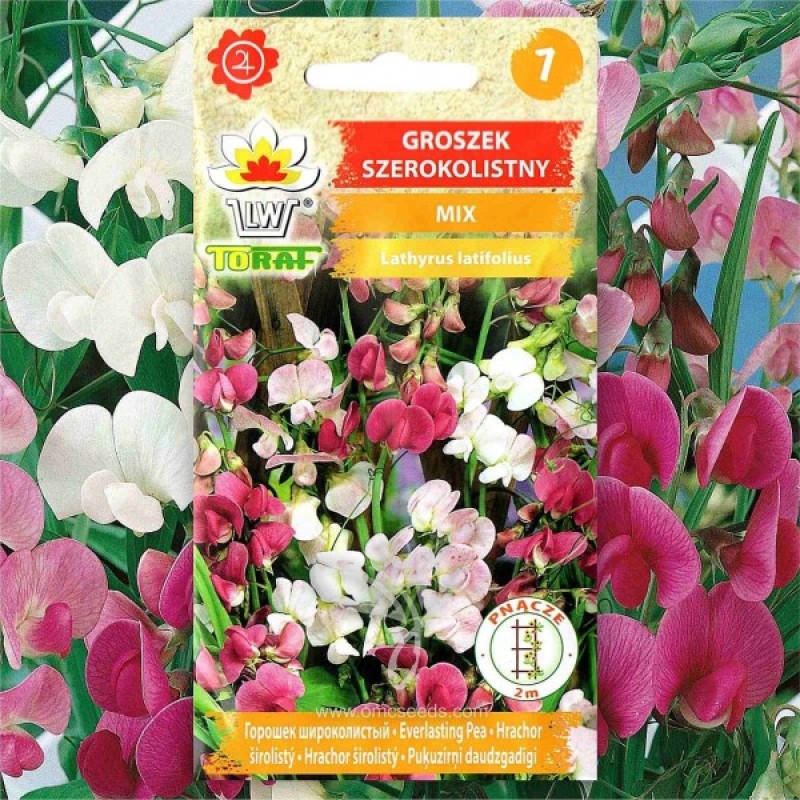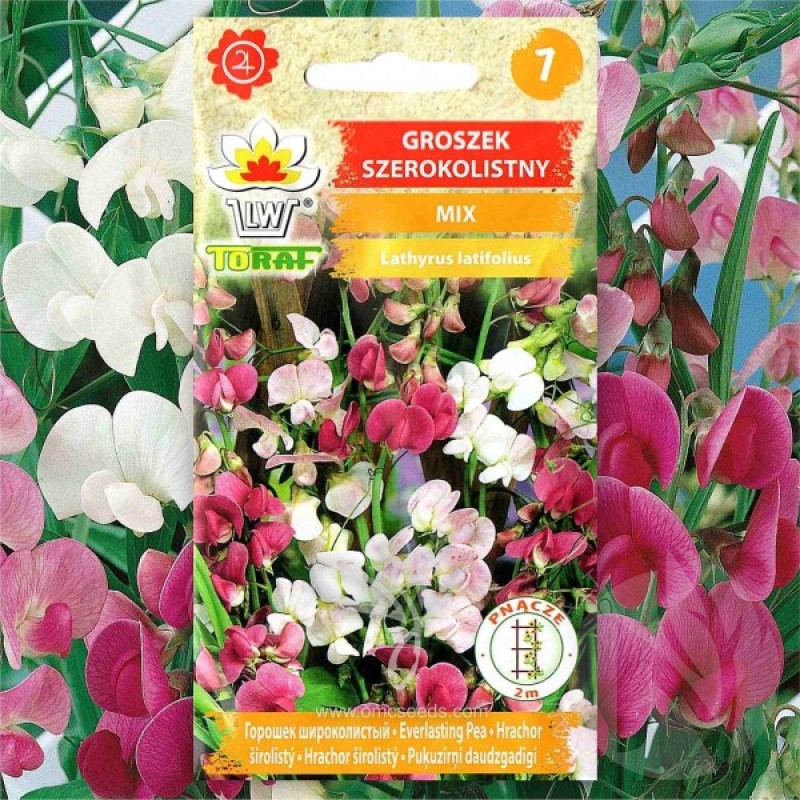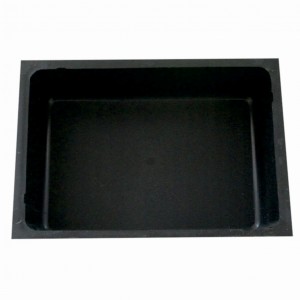



PAY ATTENTION!
All seeds (except SOLD OUT) are available for immediate shipping and will be dispatched within 1-2 business days.
INFORMATION NEEDED? PLEASE CONTACT US NOW!
Lathyrus latifolius, commonly called everlasting pea, is a rhizomatous herbaceous long-lived perennial with trailing or climbing stems that produces attractive rose to white pea-like flowers over a long summer bloom. Although native to the Mediterranean (southern Europe and Northern Africa), everlasting pea has been cultivated in North America since the early 1700s, and has over time escaped gardens and widely naturalized throughout much of the United States and Canada (typically along roadsides, fencerows, waste areas, railroad right-of-ways and fields). It is now considered to be invasive in some areas.
Broadly-winged plant stems clad with oval, medium green, 7-8 cm leaflets in pairs will ramble indefinitely along the ground or climb by tendrils up nearby vegetation or support structures to 2 m tall.
Showy flowers in colors of rose, pink-purple or white bloom early summer to fall in racemes of 6-11 flowers. Flowers are not fragrant. Flowers give way to flattened, pea-like seed pods. Both pods and seeds are toxic if ingested.
Plants will sprawl along the ground or twine onto support structures. Borders or cottage gardens. Ground cover for slopes and embankments. Trail over rocky areas. Climb on walls or fences. Containers.
Information source: http://www.missouribotanicalgarden.org/
Approximately 20 seeds in 1g packet.
Genus - Lathyrus
Species - Latifolius
Variety - mix
Common name - Everlasting Pea
Pre-Treatment - Not-required
Hardiness zones - 3 - 8
Height - 1,60 - 2 m
Spread - 0,90 - 1,50 m
Plant type - Perennial Vine, climber
Exposure - Full Sun, Partial Sun, Partial Shade
Growth rate - Fast
Soil PH - Acidic, Neutral, Alkaline
Soil type - Light (sandy), medium (loamy), heavy (clay)
Water requirements - Average water needs. Water regularly, no overwatering
Landscape uses - Plants will sprawl along the ground or twine onto support structures. Borders or cottage gardens. Ground cover for slopes and embankments. Trail over rocky areas. Climb on walls or fences. Containers.
Bloom season - Summer
Leaf / Flower color - Green / Pink, white, rose
GERMINATION INSTRUCTIONS
1. Choose a site in full sun with rich, well-drained soil.
2. Soak sweet pea seeds in warm water for 2 to 6 hours before planting.
3. Plant seeds in early spring, as soon as the soil has thawed thoroughly. Soil temperatures and moisture levels vary widely at this time of year - if you don't see any seedlings after a week or so, replant.
4. Once seeds have germinated, thin plants so that they stand 15-20 cm apart.
5. Provide support for your sweet peas to climb (unless they're the dwarf, bushy types that need no support) - they can grow up to 2 m tall. Good support candidates include netting, trellises, arbors, fences and string supports.
6. Keep soil evenly moist. Mulching is a good idea.
7. Trim or pinch faded flowers to promote longer blooming.
8. Fertilize every two to four weeks, or work in a slow-release fertilizer at planting time. Sweet peas are heavy feeders.
9. Tear out and discard plants after heat arrives and they begin to look ratty.
Info source: eHow.com
Atsiliepimų apie šią prekę kol kas nėra.
No questions about this product.









